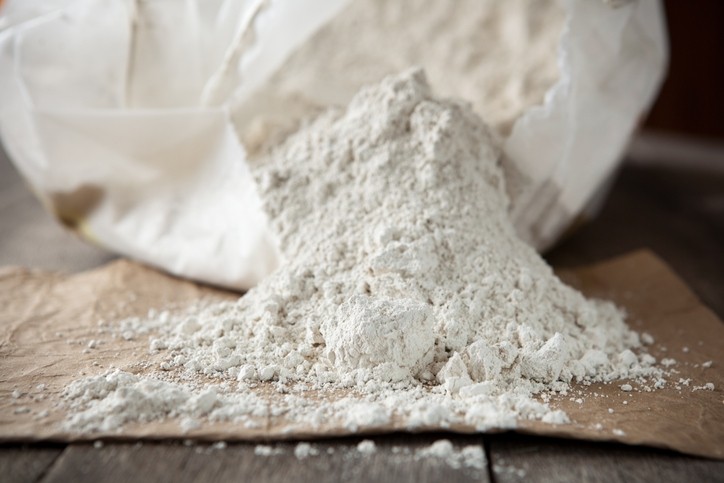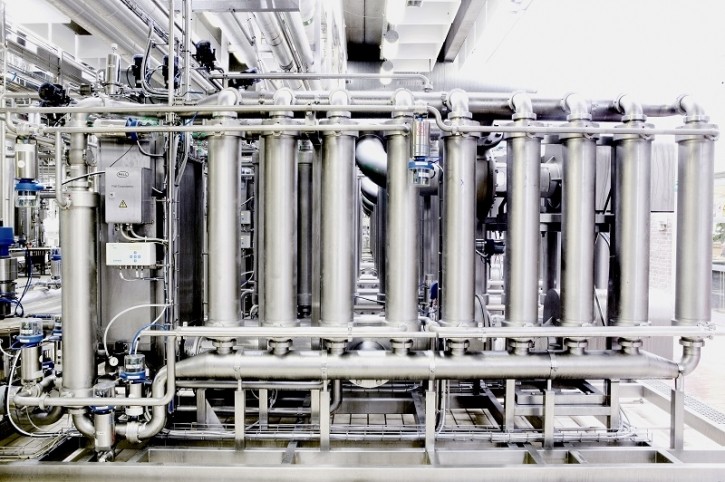Brewing up change in beer filtration

Diatomaceous earth, also known as kieselguhr, is a sedimentary rock made up of the fossilised remains of diatoms (a type of algae). It may not sound very quaffable, but thanks to its unique high porosity it is widely used by the brewery industry as the de facto filter for beer products.
But according to industrial filtration specialist Pall Corporation, this conventional method is energy-intensive, requires a high volume of water, and produces a lot of waste, making it environmentally unfriendly. It is urging brewers to switch to newer membrane-based filtration systems.
Packaging usually steals the focus when it comes to sustainability considerations in beer. But the company says that having a sustainable manufacturing process plays a crucial role in determining a brewer’s environmental footprint and is often overlooked by the average consumer.

Diatomaceous earth has “a very bizarre structure”, explained Pall Corporation’s beer market manager, Dr Roland Pahl-Dobrick. This gives it a large internal surface, making it an ideal filter for a host of liquids including beer, wine, edible and non-edible oils and even honey.
Unlike the wine industry, which has successfully transitioned away from using diatomaceous earth-based filtration, most of today’s beers are still filtered with diatomaceous earth.
The substance comes with “a big energy backpack”, he told AgTechNavigator. “Once you've dismantled it and ground it, every bit of it needs to be heat treated at 900°C. Only then does it come in a shape and form that people can use for industrial purposes.”
The process also requires a high volume of water, as pre- and post runs are needed (also causing beer loss).
Another problem is waste. Large brewers might use over a 100 tonnes of diatomaceous earth a year. After filtration – when much of the yeast and other solids like hops and grains left in the beer are picked up – its mass multiplies by roughly factor three.
“Brewers could have 300 tonnes of waste of to get rid of every year,” complained Pahl-Dobrick. "Then the same logistical chain starts again. It must be dismantled somewhere on the globe and transported to the brewery. It multiplies in mass and then it needs to be transported away from the brewery again.”
The substance is also potentially hazardous for the people working with it. “It's not something you really want to be in contact with,” Pahl-Dobrick said.
Operators need personal protection equipment to prevent inhaling it; brewers need air filtration for the same reasons. This again brings ramifications for wastage. In breweries of industrial scale, the mass of diatomaceous earth waste amounts to hundreds of tonnes per year which in many countries requires treatment as hazardous waste.
A positive impact on sustainability
Pall stopped producing diatomaceous earth filters back in the early 2000s and focused its innovation efforts on crossflow membrane filtration for beer clarification, predicting the necessity to eliminate it in beer production.
The company claims that manufacturing membranes for beer filtration shows only a fraction of the greenhouse gas emissions compared to mining, milling and heat treatment to produce diatomaceous earth powder of the needed quality for brewing (relative to the same amount of produced beer).
Depending on specific conditions and processes that are compared, it claims the improvement of water efficiency can be up to around 40% and the improvement of raw materials efficiency by reducing beer loss by up to around 50%. It stresses that membrane-based beer filtration can be used for all types of beer production without impacting quality. Additional equipment necessary to transport, store and handle dry diatomaceous earth and diatomaceous earth waste also becomes obsolete. And by eliminating it from the beer process, brewers can also eliminate exposure to diatomaceous earth powder.

Pall Corporation is not the only company offering membrane-based filtering solutions. So, what’s been the hold up if the need for a shift in the brewing industry was first identified nearly 25 years ago?
Cost is one bottleneck. Capex is higher when you invest into membrane filtration, admitted Pahl-Dobrick. That’s why the wine industry – typically made up of smaller companies who do not produce 24/7 – is much further along in the move away from traditional filtration.
But Pahl-Dobrick stressed a “slightly higher” price will pay back over time by the reduction in consumption. “I like to use the example of dishwashing. If you do your dishes at home with running water in the sink, you will use more hot water. If you buy a dishwater, it’s an upfront cost but you will use less water.”
He added that an increased sustainability push is assisting the shift among breweries. “It's no secret that all the big brewers have sustainability programmes and they have opened up investigations to look into the whole production chain. There are many areas where you can improve your sustainability impact. Everyone speaks to using recycled packaging but if you move to the actual beer production there is also the opportunity to do things like reducing the waste of beer filtration drastically.”
Membrane-based filtration systems are also becoming increasingly more sophisticated and automated to lower both the energy consumption and manpower need. They are also reusable.
“With crossflow filtration the liquid is pumped tangentially over the surface of the membrane and the pressure difference is making the liquid travel through the membrane," explained Pahl-Dobrick. "That's why it's such an efficient process. It can also give you a very sharp filtration.”
He added: “Diatomaceous earth still dominates beer filtration, but the change is picking up speed.”





